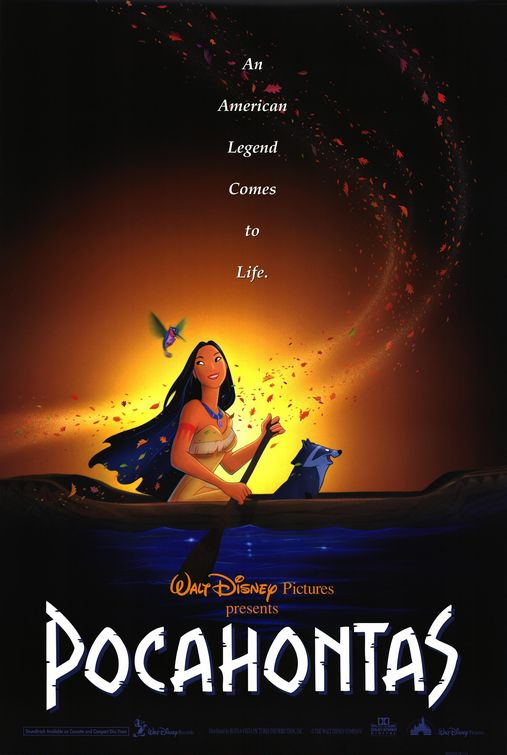
| None | Light | Moderate | Heavy | |
|---|---|---|---|---|
| Language | ||||
| Violence | ||||
| Sex | ||||
| Nudity |
Content:
(E, FR, RH, Pa, NA, PC, RH, V, M) An pantheistic environmentalist worldview mixing New Age thinking and Native American animistic religious beliefs. This is a revisionist historical tale that takes visible pains to be as politically correct & inoffensive as possible; no obscenities or profanities; action violence involving gunslinging & fist fighting; romantic kissing but no nudity or sexual indiscretions implied or otherwise.
More Detail:
In POCAHONTAS, John Smith and the English set sail for America in search of gold. In America, Chief Powhatan and his noble warriors celebrate a victory. One warrior claims his love for the Chief’s daughter, Pocahontas and claims he wants to marry her. The Chief tells his daughter, but she refuses the proposal. Instead, she seeks advice from a talking willow tree and the tree tells her the man she will marry will carry a “spinning arrow” or compass. John Smith and Pocahontas meet, and she discovers he has the compass. They kiss, but her father sees them and attacks John Smith. Another Englishman sees the attack, and kills the chief. The tribe captures John Smith and prepares to behead him, but the English arrive for battle. In what could have been a fatal showdown, Pocahontas interrupts and calls for a peace, saving the lives of many people.
POCAHONTAS demonstrates that peace through negotiation is preferable to battle. The character of Pocahontas demonstrates some feminism and dishes out a little environmentalism and spiritism. The film doesn’t completely cave into a bad white man/good Indian political correctness but both sides share blame. This film doesn’t have sweeping themes and archetypal characters, but it does make some moral points. However, in the end, many will complain that POCAHONTAS is too New Age.



 - Content:
- Content: 



